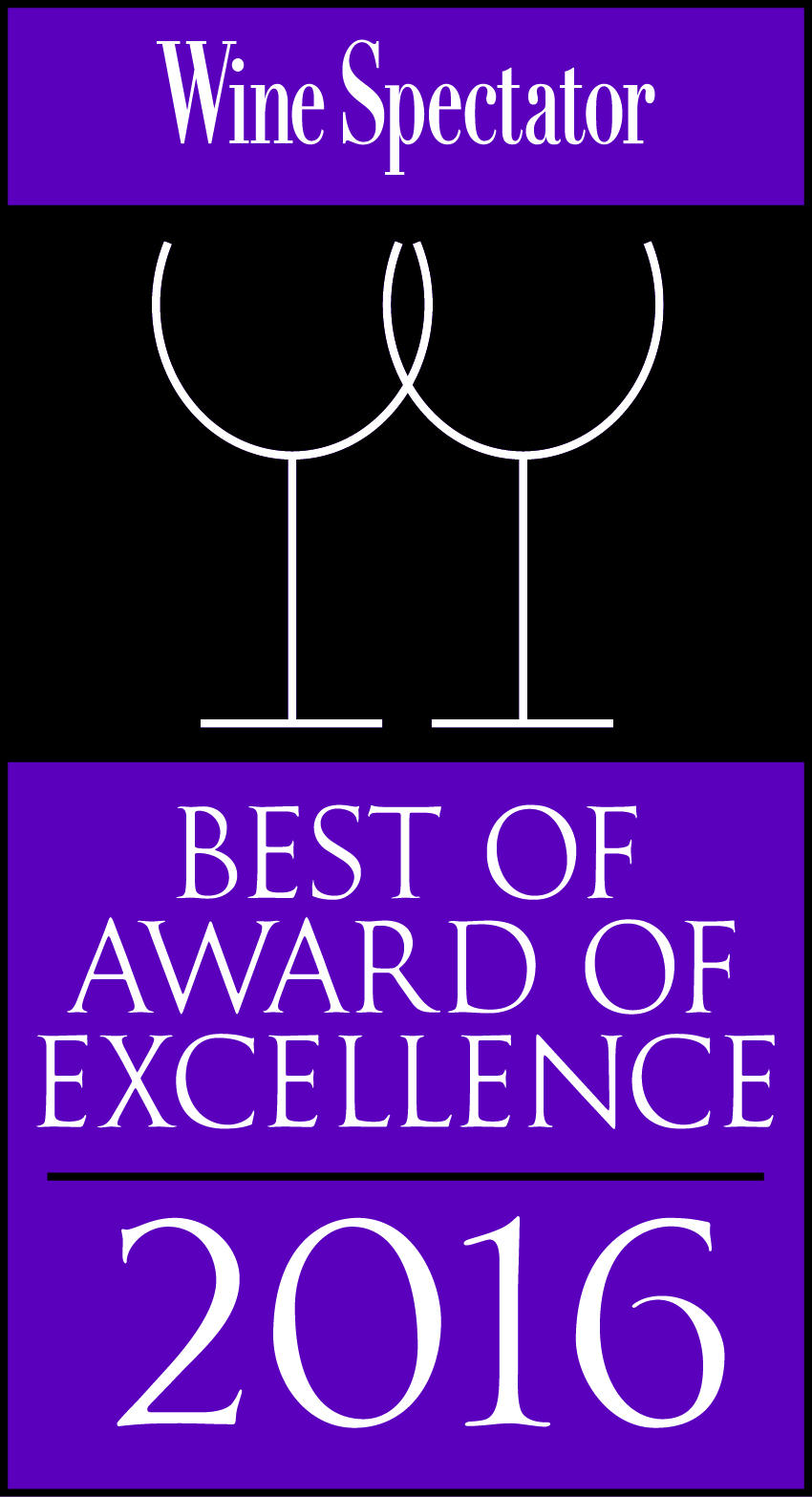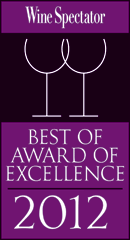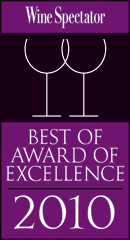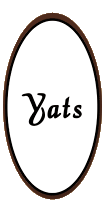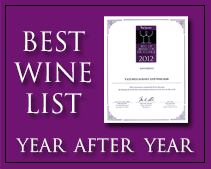Vosne-Romanée Premier Cru Wine
December 25, 2010
About Wines from Vosne-Romanée, Burgundy of France
Best wine supplier in Philippines discusses wine related topics
Vosne-Romanée Premier Cru
Nowhere is wine more noble than in Vosne-Romanée. Between the Nuits-Saint-Georges premier cru of Boudots to the south and the walls of the Clos de Vougeot at the northern end lie the 240 hectares (just under 1000 acres) of Vosne-Romanée vineyard: the most valuable piece of vinous real estate in the world.
Fifty-eight hectares of this is premier cru, and there are 11 of these. Five of them lie just above the grands crus, six on the same altitude or a little further down the slope. The climats are listed, as was the tasting whose notes are below, roughly in south-north order.
Malconsorts. The 5.86 hectares of Malconsorts or Aux Malconsorts (never Les) lie beween Nuits-Saint-Georges, Aux Boudots and the grand cru of La Tache. The vineyard is roughly rectangular, with the north-south distance shorter (just under 200 metres) than the east-west extent. Given its location, you might expect a Nuits-Saint-Georges robust earthiness, but it is fairer to say that it is Boudots which has a Vosne character than the other way around. Malconsorts, however, is certainly full, if indeed sturdy, and at its very best not far behind La Tache in richness. The Domaine Thomas used to be the principal landholder, but their domaine was sold, and here in Malconsorts divided, between the Dujac and de Montille estates in 2005. These both produce excellent wine. So do Lamarche, Bichot (Clos Frantin) and Alain Hudelot-Noëllat. The best wines, however, today come from Sylvain Cathiard.
Chaumes. Downslope from Malconsorts lies Chaumes, at the same altitude as the village itself. It is a little larger, at 6.46 ha., and roughly square, with – as everyone will tell you if they have vines in the vicinity – the best wines coming from the north-west corner where Chaumes touches La Tache. And, yes, there are some lovely Chaumes from up here. But in general Chaumes has less intensity and volume. In terms of its distinction Chaumes is a second division premier cru, and this is reflected in the prices the wine attracts. The best addresses include Arnoux, Confuron-Gendre, Lamarche, Liger-Belair, Grivot, Gros Frère et Soeur, Méo-Camuzet, Daniel Rion and Jean Tardy.
Clos de Réas. Further downslope, but at a higher altitude than its north and south village wine neighbours, a wall surrounds the Michel Gros 2.12 ha. monopoly of Clos de Réas. This is the only first growth en monopole. In theory you would expect, like Chaumes, a lesser wine here, in first growth terms. But this would be to forget the economies of scale the monopoly allows, and to overlook the genius behind Michel Gros’ wine-making. Clos de Réas is not a heavyweight, but it is a wine that has all the pure fragrance and supreme elegance of Pinot Noir at its most supreme. In several vintages it was voted the best wine at the tasting.
Gaudichots. Most of the best of the Gaudichots vineyard was absorbed into La Tache in the 1920s and 1930s, leaving just over a hectare, divided into three or four separate pieces at the sides and above the grand cru. Some is owned by the Domaine de la Romanée-Conti and normally (does some now go into the Cuvée Duvault-Blochet?) sold off in bulk. Régis Forey is the main source of domaine-bottled wine. The merchant Nicolas Potel had one cask of a superb 1999. This is a full, sturdy, masculine Vosne-Romanée.
Reignots. Above La Romanée lies the 1.62 vineyard of Aux Reignots. The slope is steep, the soil stony and only inches deep, and the climat divided up into various different parcels like a staircase. The wine is very elegant, but in cooler years can lack a little succulence. Louis-Michel Liger-Belair of the Château de Vosne-Romanée has the lion’s share of this first growth, and it lies just above his grand cru. Among the other names I can recommend Sylvain Cathiard and Robert Arnoux.
Petits-Monts. Next door, above Richebourg, you will find Aux (or Les) Petits-Monts, very similar to look at, but, at 3.67 ha., quite a bit larger. Like most of Burgundy, there are far too many owners, and those with the most substantial parcels produce the best wine. Véronique Drouhin’s wine should be on anyone’s list. She has two parcels of very old vines totalling just under half a hectare and cultivated biodynamically. Liger-Belair, Régis Forey and Robert Sirugue, an estate whose reputation had not been much to be proud of until recently, should be noted. Mongeard-Mugneret is the name of another major owner here, but I do not recommend his wines. The Domaine de la Romanée-Conti is a further proprietor, but sells its wine off in bulk. The wines here have much in common with those of Reignots: purity, finesse and a silky texture, rather than bulk. The parallel is with La Romanée rather than Richebourg.
Cros Parantoux. Next door to the north, also above Richebourg, is the 1.01 ha. Cros (NB not ‘clos’) Parantoux. Following phylloxera and the subsequent economic difficulties, the land had been allowed to return to nature. It was owned by the Camuzet family, but they were absentee landlords. Towards the end of the Second World War Henri Jayer, one of the Camuzet’s sharecroppers, was entrusted with developing the vineyard once more, and his successor, Emmanuel Rouget is now the majority landowner, with the Méo-Camuzets, as they have become, the proprietors of the rest. The vines are old, and though this is also an ‘upslope’ wine it seems to have much more of a Richebourg character than the two I have described immediately above. Here we do have velvet rather than silk, and plenty of richness and volume. Much coveted by collectors (not all of whom deserve a wine as good as this, sadly) and so very expensive.
Croix-Rameau. A bite out of the bottom, north-east corner of Romanée-Saint-Vivant, opposite the village cemetry, gives us the 0.60 La Croix-Rameau, the smallest premier cru in the commune. The most important grower here is Lamarche, and like the rest of Lamarche’s wines quality has revived here to the heights of what it used to be in the 1950s and 1960s, that is very high indeed. This is a wine with a true grand cru flair, and Lamarche, together with its neighbours, such as the Cacheux-Blée family is lobbying to have the land redesignated Romanée-Saint-Vivant; so far with no success, but wheels such as these turn slowly.
Brulées. With Les (or Aux) Brulées, 4.53 ha., we come to what are generally regarded as the three best first growths – I’d today add Malconsorts to make four. This one is schizophrenic, given that it is divided into two sections by the road going up to Concoeur, and so having a north-east facing slope opposite one that is inclined to the south. From either side, however, we have a wine of voluptuous richness and backbone, quality and depth, and the ability to last. On the southern side, facing north-east, note the wines of Méo-Camuzet, Michel Gros and Gerard Mugneret; facing them lie those of Confuron-Gendre, Engel (now the Domaine Eugenie), Grivot, J. P. et M. Guyon, Bruno Clavelier, Leroy and Liger-Belair.
Suchots. Les Suchots occupies a flattenned egg sort of mound between Richebourg and Romanée-Saint-Vivant, and Echézeaux, and is the largest of the Vosne-Romanée premiers crus.There are just over 13 hectares. This is the most noble of all the first growths. In the best hands we really do get grand cru quality. The wine is full bodied, less lush than Brulées, less finely spirited (in a racehorse sense) than Beaumonts, but of great breeding nonetheless. Look out for the examples of Arnoux (very old vines at the western end of the climat), Gérard Cacheux, Cathiard, Confuron-Cotéditot, Grivot, Hudelot-Noëllat, Jadot, Lamarche, Liger-Belair, Gérard Mugneret and the Domaine de l’Arlot.
Beaumonts. Variously written as two words (Beaux Monts) and with or without the prefix Aux or Les (French nomenclature is consistently inexact), this vineyard lies above Brulées and Echézeaux and measures 11.39 hectares. You could term this an ‘upslope’ climat except that the altitude only rises to just over 300 metres rather than 325 as in Reignots and Petits-Monts. The vineyard also inclines well to the south and the partly marly soil is deeper. These factors are confirmed in the character of the wine which is rich and full, with considerable flair and perfume and a good acidity. The best sources include Gérard Cacheux, Bruno Clavelier, J. J. Confuron, Confuron-Gendre, Dujac, Grivot, Hudelot-Noëllat, Jadot, Leroy and Daniel Rion.
Two more, small, premiers crus remain, both upslope from Echézeaux and of minor importance: the 2.62 ha. Les Rouges and the 1.79 ha En Orveaux. These are proper ‘upslope’ wines: cooler, medium-full rather than full-bodied, elegant and intense rather than rich and succulent, for the altitude stretches up to 325 metres in the former, while the latter faces distinctly north-east. I know of only one producer of Les Rouges: Grivot, and this is the least good (but what a high overall standard!) of his six first growths (it’s also the cheapest). The star in the Orveaux is the brilliant Sylvain Cathiard. The Guyon brothers also have a small holding.
Much as we would all appreciate the opportunity to drink grand cru Vosne-Romanée, anyone will gain enormous pleasure, as well as enlightenment, by comparing two of the first division first growths for the same cost, or indeed three of the second division. Etienne Grivot sums up the best as follows: Suchots is the most aristocratic, Beaux-Monts is the most classic, and Brulées softer and more voluptuous.
The Connecticut Wine Group sampled the following wines at the end of March 2009. The perspicacious will note that the crus have been listed in a rough south to north order.
Malconsorts, Domaine Cathiard, 2002
Full colour. Splendidly rich nose. Aspects of caramel and mocha. Fullish body. Concentrated, vigorous, balanced and very classy. Intense and very lovely. Very fine. From 2014.
Malconsorts, Domaine Hudelot-Noëllat, 2002
Medium-full colour. Attractive, plump nose. Again a little mocha. Medium-full body. Good grip. Balanced. Nicely concentrated. Good finesse. Very good indeed, but not fine. From 2013.
Chaumes, Domaine Liger-Belair, 2002
Medium-full colour. Laid-back, composed, classy nose. Lovely harmony. Medium to medium-full body. Balanced. Intense. Concentrated. By no means a blockbuster but very long and vigorous. Gently oaky. Very fine. From 2013.
La Croix Rameau, Domaine Lamarche, 2002
Medium-full colour. Ripe nose. Nicely succulent. Even rich. Fullish. Some Tannin. Classy. Balanced. Lovely fruit. Good concentration and energy on the follow through. Fine plus. From 2014.
La Grande Rue, Domaine Lamarche, 2002
Yes. By this time a grand cru. But not when it comes to the earlier vintages. And we had never assessed this climat before.
Full colour. Full, firm, rich and concentrated on the nose. Lots of depth. High quality. Full body. Structured and vigorous. Very good tannins. Very good grip. A lot of intense, high quality wine here. Very lovely rich fruit. Very long. Excellent. From 2015.
Clos de Réas, Domaine Michel Gros, 2002
Medium-full colour. Just a bit of reduction on the nose at first, but basically, lain-back, ripe and generous. Medium body. Rich. Gently tannic and very good grip. The reduction hides the finesse, and one wonders if it is not just a little loose-knit for the vintage. Yet long on the palate. From 2012.
Aux Reignots, Domaine Liger-Belair, 2002
Full colour. A little reduction on the nose at fist, but this blew away. A bigger, richer wine than his Chaumes. Fresh. Medium-full body. Good grip. Most attractive fruit. Gently oaky. Long and fine quality, but his Chaumes has more finesse. From 2013.
Petits Monts, Domaine Veronique Drouhin, 2002
Medium-full colour. Fragrant, stylish, ripe nose. Medium-full body. Lovely rich abundant fruit on the palate. Very fresh. Very harmonious. Classy and intense. Delicious. Fine plus. From 2012.
Cros Parantoux, Domaine Méo-Camuzet, 2002
Very good colour. The nose is quite marked by the new wood, but the wine is rich, fat and caramelly. Full body. Very good acidity. Very, very concntrated. Very ripe, rich fruit on the palate. Lots of energy. Long. Fine plus/very fine. From 2015.
Aux Brulées, Domaine Engel, 2002
This seems to have shut down a bit. Medium-full colour. Not much nose. Better on the palate. Medium-full body. Fresh, laid-back, concentrated fruit. Gently oaky. Intense. Long. Fine. From 2012.
Aux Brulées, Domaine Michel Gros, 2002
Fullish colour. Very lovely nose. Rich and concentrated, without being a blockbuster. Gently oaky. Fullish body. Ripe tannins. Very good grip. A bigger, richer, more concentrated wine than his Clos de Réas. This is very lovely. Very fine. From 2014.
Beaux-Monts, Maison Jadot, 2002
Fullish colour. Ample, rich, abundant nose. Fullish body. A most attractive, rich, concentrated wine on the palate. Harmonous, classy and intense. Some tannin. Gently oaky. Long. Very lovely. Very fine. From 2015.
Suchots, Domaine de l’Arlot, 2002
Medium-full colour, some development. Whole cluster nose. Medium to medium-full body. Similar on the palte. Lacks fat. Some of the tannins are a bit astringent. Not for me. From 2012.
Suchots, Maison Jadot, 2002
Fullish colour. Ample, rich, abundant nose. Not a lot different from their Beaux-Monts. On the palate a little less concentrated, and much less intense. Balanced and fruity but a little loose-knit. Only very good. From 2012.
Cuvée Duvault-Blochet, Domaine de la Romanée-Conti, 2002
Full colour. Firm, full aristocratic nose. Very lovely profound fruit. Certainly premier cru worthy if not as rich or as concentrated on the follow through as the best of the above. Ample. Very good grip. But fine rather than very fine. From 2015.
The group vote was overwhelmingly for the Cathiard Malconsorts as the best wine of these 2002s. The most favoured of the also rans were the Méo-Camuzet Cros Parantoux, the Gros Brulées and the Liger-Belair Chaumes.
Chaumes, Domaine Méo-Camuzet, 1999
Very good colour. Not nearly as much pronouced oak as in the 2002 Cros Parantoux. Full body. Some tannin and oak on the palate. Pronounced acidity. Quite rich. But not a lot of charm. Ripe, but slightly austere. Very good indeed. From 2012.
Chaumes, Domaine Robert Arnoux, 1999
Full colour. Still immature. Ripe nose. Good depth, class and interest. Medium-full body. Gently oaky. Fresh. Balanced. Not great but ripe, and complex and subtle at the end. Fine. From 2011.
Clos de Réas, Domaine Michel Gros, 1999
Full colour. Still immature. Soft, intense, laid-back nose. Fresh. Just about ready. Lovely cool classy fruit. Very gently oaky. Long and complex. Fine plus. From 2010.
La Grande Rue, Domaine Lamarche, 1999
Full colour. Still immature. Rich, concentrated nose. Fullish body. Some new oak. Quite a big wine, which still needs time. Some tannin to resolve. Rich but slightly austere. But the finish is fresh and classy. Fine. From 2013.
Petits Monts, Domaine Veronique Drouhin, 1999
Medium to medium-full colour. Ripe, fragrant, complex and classy on the nose. Medium-full body. Very good balance and grip. Still a little tannin to resolve, but getting there. Long, intense and very stylish. Lovely. Fine plus. From 2011.
Cros Parantoux, Domaine Méo-Camuzet, 1999
Full colour. Rich, fat, oaky nose. Much like the 2002 and quite different from the Chaumes 1999. Still a little tight, but full bodied, rich and concentrated. Lots of fruit. A wine with an agnda, but a good agenda. Fine – or even better, according to your taste. Long on the finish. From 2013.
Cros Parantoux, Domaine Henri Jayer, 1999
Full colour. The sample was slightly corked (and we had no back-up bottle) but one could see a rich wine, less oaky and concentrated than the Méo, but with very lovely fruit and very fine grip. Fine plus at least. From 2012.
Aux Brulées, Domaine Méo-Camuzet, 1999
Very full colour. Rich, fat, oaky, concentrated and tannic on both the nose and the palate. Good grip. A little adolescent but good structure. Plenty of depth and class. Lovely finish. Fine. From 2013.
Beaux-Monts, Maison Louis Jadot, 1999
Full colour. Still youthful. Slightly tight and adolescent on the nose and the attack. Fullish. Good fruit and grip and concentration. But a bit lumpy today. Fine at least. From 2013.
Beaux-Monts, Domaine Daniel Rion Père et Fils, 1999
Full colour. Still youthful. The nose is a bit tight with some reduction. Medium body. Fresh and balanced but a little unsophisticated. Cleaner at the end than at the beginning. Good long finish. Very good plus. From 2011.
Beaux-Monts, Domaine Grivot, 1999
Very full colour. Immature. Brilliant nose. Super elegant and complex. Very fine laid-back textured fruit. Intense and classy. Full body. Backward. Still some tannin. Profound and intense. Excellent. The best of the 1999s by a long way. From 2013.
Beaux-Monts, Domaine Dujac, 1999
Fullish colour. Some sign of maturity. Round, ripe, rich, sweet but fresh nose. Very Dujac. Lovely style. Medium to medium-full body. Balanced. Lovely fruit. Long, complex and classy. Fine plus. From 2011.
Cuvée Duvault-Blochet, Domaine de la Romanée-Conti, 1999
Fullish colour. Rich and concentrated and slightly oaky on the nose. Rather more dimension than the 2002 today. Fullish body. Very lovely fruit here. Very good tannins and very good grip. Classy and profound. Long on the palate. Fine plus. From 2013.
This time it was the Clos de Réas which got the overwhelming group vote. Honorable mentions to the Duvault-Blochet, the Méo Cros Parantoux and the Méo Brulées.
Malconsorts, Domaine Cathiard, 1998
Fullish colour. Barely mature. Attractive, plump nose. Medium to medium-full body. Ripe, full of fruit. Balanced, long and seductive. Very good indeed if without the dimension of the 1996. Now ready. Now-2018.
Cros Parantoux, Domaine Emmanuel Rouget, 1998
Full colour. Attractive, plump, fruity nose. Not too oaky. Fullish body. Very good tannins. Ample, round, yet still firm and youthful. Very good intensity and vigour, though a little four-square as it evolved. Very fine at first; only fine on aeration. From 2012.
Reignots, Domaine Régis Forey/Bouchard Père et Fils, 1998
Full colour. Classy nose. Very well balanced fruit here. On the palate a little four-square, with hints of astringency about the tannins. Yet very good fresh fruit at the same time. A curate’s egg of a wine. From 2011.
Suchots, Domaine Robert Arnoux, 1998
Fullish colour. Some tannin on the nose. Slightly hard, with an absence of richness. Better on the palate. Ample fresh fruit, if without the greatest of class and depth. But long and succulent. Very good From 2011.
Beaux-Monts, Domaine Leroy, 1997
Fullish colour. No undue maturity. Clean, fresh and very classy, for a 1997, on the nose. But quite evolved. Medium-full body. Fresh and à point. The attack is very good but then it tails off a bit. Very 1997! A lot better than most though. Fine for the vintage. Now-2014.
Beaux-Monts, Domaine Daniel Rion Père et Fils, 1997
Full, youthful colour. Good fresh nose. Really quite classy. Medium to medium-full body. Fresh and ripe and plump and positive. This is really very good indeed for the vintage. Lovely finish. Now-2014.
Malconsorts, Domaine Cathiard, 1996
Full, immature colour. Ripe, succulent and very lovely on the nose. Much better than the 1998. Fullish. Very good grip. Lovely fruit. The tannins are now soft but the wine still needs a bit of time to round off. Very fine finish. Fine plus. From 2012.
Malconsorts, Domaine Hudelot-Noëllat, 1996
Fullish, still youthful colour. Decent nose. But an absence of real concentration, depth, class and intensity. Medium to medium-full body. Decent balance, structure and style but lacks the flair of the very best. Very good. Just about ready. Now-2018.
Malconsorts, Domaine Lamarche, 1996
Medium-full colour. Plenty of class and depth on the nose. Rich and succulent on the palate. Fullish body. Still some tannin. Very clean and very good depth. Lovely fruit and an impressive finish. Fine plus. Will still improve. From 2012.
Petits Monts, Domaine Veronique Drouhin, 1996
Fullish, youthful colour. Aromatic, fragrant nose. Not a blockbuster but attractive, balanced fruit. Medium to medium-full body. Just a touch of tannin. Very intense fruit. Rich and ripe. Just about ready. Fine plus. Now-2020 plus.
La Grand Rue, Domaine Lamarche, 1996
Full, immature colour. Closed-in nose, but full, rich, concentrated and profound. A big, tannic, backward wine with lots of depth and energy. Just needs time, but could be really fine. From 2014.
Gaudichots, Domaine Régis Forey, 1996
Full colour. Still youthful. Just a little dry and clumsy on the nose. And similar on the palate. The tannins are a bit astringent and this makes for an inflexible wine. Very good indeed at best. Give it a couple of years to see if it softens. From 2011.
Reignots, Domaine Régis Forey/Bouchard Père et Fils, 1996
Full immature colour. A lack of flair, balance and class on the nose. Four-square. Higher toned than the Gaudichots above. Slightly less tannic. So a better wine. But not brilliant. Very good indeed. Just about ready. From 2010.
Aux Brulées, Domaine Engel, 1996
Medium-full colour. Still youthful. An evolved nose compared with most of these 1996s. Exotic. Ample. Succulent. Medium-full body. Excellent grip. Long and lovely. Just about ready. Fine plus. Now-2025.
Cros Parantoux, Domaine Méo-Camuzet, 1996
Fullish colour. Still youthful. Slightly firmer and richer than the Rouget below. More concentrated too. But more ‘modern’. Not too much so though. Fullish body. Rich. Oaky. Very good attack, but slightly less impressive on the follow through. There is a touch of astringecy from the tannins. Will a couple of years improve it? From 2011.
Cros Parantoux, Domaine Rouget, 1996
Full immature colour. Ripe, plump, succulent nose. No undue structure or new oa. I prefer this to the Méo: it has more flexibility. Rich, intense and concentrated. Fullish body. Long and lovely. Very fine. Better still in two years time. From 2011.
Beaux-Monts, Maison Dominique Laurent, 1996
Full, immature colour. Rather stewed and also rather corked. Not very good, I think.
Beaux-Monts, Domaine Leroy, 1996
Full, immature colour. Ripe, concentrated, aromatic nose. Touches of new oak. This is surprisingly flat on the palate, letting the acidity dominate. Medium body. Ripe tannins. But somewhat vegetal at the end. Just about ready. Now-2014.
Suchots, Domaine Confuron-Cotiditot, 1996
Medium-full colour. A little development. Sweet, whole-cluster nose. Quite classy though. Medium-full body. Balanced. Good intensity. Long on the palate. Yet not the class and depth of the best. Very good indeed/fine. Just about ready. Now-2020 plus.
Suchots, Domaine Hudelot-Noëllat, 1996
Medium-full colour. A little development. Like the Malconsorts this is neat, mature, fresh and balanced. Medium to medium-full body. Fine but it lacks the depth and flair of a great wine. Classier than the Malconsorts though. Long, attractive finish. Just about ready. Now-2020 plus.
Suchots, Maison Louis Jadot, 1996
Very full, immature colour. Firm, cigar-boxy nose. A bit of a monolith but rich and full as well as firm and full of fruit. Very good grip. Intense. Long. Potentially fine plus, and it got better and better in the glass. From 2014.
Malconsorts, Domaine Cathiard, 1995
Fullish colour. Only a hint of maturity. Lovely fragrant, intense, rich nose. Very composed. Very classy. Fullish body. Now just about ready. Very long. Very fine. Now-2025.
Chaumes, Domaine Tardy, 1995
Fullish colour. Barely mature. Attractive, plump nose. Medium to medium-full body. Ripe and full of fruit. Balanced, long and seductive. Very good indeed. Now-2020.
Aux Brulées, Domaine Engel, 1995
Medium to medium-full colour. Fully mature. Soft, rich, ripe and concentrated on the nose. Medium body. Round. Full of fruit. Ample. Classy. Fully ready. Fine plus. Now-2020 plus.
Beaux-Monts, Domaine Grivot, 1995
Full immature colour. Quite a firm nose still. Full, classy and very concentrated. Full body. Some tannin. Excellent concentration on the palate. Splendidly profound. Lovely intense fruit. This is very fine, indeed brilliant. It will still improve. From 2011.
Suchots, Maison Louis Jadot, 1995
Full colour, barely mature. Rich, concentrated, slighly earthy, backward nose. Full body. Lots of depth and concentration here. Intense. Still firm. Still some tannin. Real energy and dimension. Very fine, though a bit adolescent at present. From 2012.
Clos de Réas, Domaine Michel Gros, 1993
Medium-full mature colour. Lovely aromatic nose. Ripe, concentrated and sweet. Lots of class and harmony. Excellent balance. Very lovely ripe, concentrated, succulent fruit on the palate. Real depth and class. Fine plus/very fine. Just about ready. Now-2020 plus.
Chaumes, Domaine Tardy, 1993
Fullish colour, now mature. Firm on the nose but rich, concntrated and profound. Unexpectedly fine. Fullish body. Rich, concentrated and quite sweet on the palate. Slightly earthy. Lots of depth and a lovely finish. Only just ready. Fine. Now-2020 plus.
Beaux-Monts, Domaine Leroy, 1993
Full colour. Barely mature. Ripe nose, but no real personality or depth. Indeed a touch vegetal on the palate. Medium body. Fresh, but slightly raw and one-dimensional compared with these other 1993s. Very good at best. Now-2013.
Beaux-Monts, Domaine Daniel Rion Père et Fils, 1993
Full, very fresh colour. Rich, ripe, ample, but slightly reduced nose. Not hard. Medium body. Very fresh and fruity on the palate (the reduction soon blew away). Most attractive fruit. Rather more class than the other vintages of this wine. Long on the palate. Very good indeed. Now-2018.
Cros Parantoux, Domaine Henri Jayer, 1993
Fullish colur. Still very youthful. Slightly earthy but more flexible than the Méo. Less concentrated but better mannered. Less earthy as it evolved. Rich. Concentrated. Fat. Ample. Very fine. Now-2020 plus.
Cros Parantoux, Domaine Méo-Camuzet, 1993
Very full colour. Barely mature. Concentrated but not over-extracted nose. Very oaky, though. Better on the palate. Vigorous. Balanced. Rich but still a little tough. Will it ever round off? Very good indeed but no better – nor would it be very food friendly. Now-2015.
Suchots, Domaine Mongeard-Mugneret, 1993
Medium-full colour. Rather astringent on the nose and lumpy and coarse on the palate. Full and rich but four-squre and with quite a lot of acidity lurking in the background. Poor. Drink soon if at all.
Clos de Réas, Domaine Michel Gros, 1991
Medium to medium-full colour. Fully mature. Soft aromatic nose. Round, mellow and balanced on the palate. Not as rich or as concentrated as the 1993 but à point and very lovely. Now-2016
Malconsorts, Domaine Hudelot-Noëllat, 1990
Full, mature colour. Ripe, plump, slightly tarty nose. Lacks real purity and finesse. Some oak. Medium body. Ripe and seductive. Balanced and fresh. Attractive if not that classy. Fully ready. Very good indeed. Now-2018.
Malconsorts, Domaine Charles Thomas/Maison Moillard-Grivot, 1990
Full mature colour. The nose is rather too four-square, indeed slightly over-macerated. Full, but lumpy attack. Good grip though. Better at the end. Good at best. Now-2015.
Chaumes, Domaine Tardy, 1990
Fullish mature colour. Quite a substantial nose. Full and rich, but slightly earthy. Fullish, quite some tannin but the tannins fully resolved. Ripe and rich. Not the delicacy, intensity of sheer class of the Clos de Réas but lots of wine here. Good concentration. Good definition. Fine. Now-2020 plus.
Clos de Réas, Domaine Michel Gros, 1990
Fullish mature colour. Very lovely nose. Fragrant, mellow, rich and concentrated. Beautifully put together. Splendid fruit. Very fine quality. Now-2020 plus.
Beaux-Monts, Maison Drouhin, 1990
Full, mature colour. High-toned, fragrant, classy nose. Medium to medium-full body. Very ripe, indeed rich. Very intense. Very lovely. There is real finesse here. Lovely finish. Fine plus. Now-2020 plus.
Suchots, Domaine Hudelot-Noëllat, 1990
Full colour. Fuller than the Malconsorts. No undue maturity. Once again rich, but more profound and above all more class. Medium-full body. Balanced. Rich. Complete. Fine. Now-2020
Malconsorts, Domaine Cathiard, 1989
The colour was fine, but the wine finished.
Petits Monts, Domaine Veronique Drouhin, 1989
Full vigorous colour. A little tight on the nose, surprisingly. Good fragrant fruit underneath. But slightly four-square, even rigid. The Beaumont 1990 above is much better. Now-2016.
Beaux-Monts, Domaine Leroy, 1989
Full, barely mature colour; Fragrant, ripe and rich on the nose, but lacks definition and finesse. Full and balanced on the palate but slightly rigid and no more than very good. Now-2015.
Clos de Réas, Domaine Michel Gros, 1988
Fullish ature colour. Slightly more austere than the 1990. But ripe, fresh and classy. Medium-full body. Very good structure. Ripe tannins. Complex and intense. Rich and succulent. Elegant and very long on the palate. Very fine. Now-2016.
Petits Monts, Domaine Veronique Drouhin, 1988
Medium-full mature colour. Rather more together than the 1989. Balanced and plump, with no austerity or hardness. Medium-full body. Ripe. Round. Balanced. Fresh and complex. A lovely laid-back wine. Very fine. Now-2015.
Beaux-Monts, Maison Camille Giroud, 1988
Medium to medium-full colour. Soft, spicy nose. Very mellow. Some stems in the vinification here? Medium body. Fully evelved. Not a bit too lean. Good grip, intensity and class. Very good indeed. Now-2014.
Suchots, Domaine Confuron-Coteditot, 1988
Medium-full, mature colour. Rich, fat, ample, spicy nose. Sweet. Medium body. Vigorous and attractive, if not very classy. Very good indeed. Now-2014.
La Grande Rue, 1986
Decently full fresh colour. The nose too is fresh and vigorous if without any great nuance or class. But on the palate it is lumpy and coarse. Past its best, and it was never much good in the first place.
Clos de Réas, Domaine Michel Gros, 1985
Good colour. Good class, weight and depth on the nose. Now mellow. The acidity shows a bit, and I prefer the 1988, let alone the 1990. This is very good, but it is now drying up a bit, and losing its succulence. Drink soon.
Petits Monts, Domaine Roland Vigot, 1985
Medium-full, quite vigorous colour. The fruit has got a bit thin, and astringency shows. Past its best.
Suchots, Maison Drouhin, 1985
Medium to medium-full colour, fully mature. Fresh, succulent, ripe nose. Lovely fruit on the palate. Balanced, fresh, rich, ample and classy. Holding up better than a lot of 1985s. Fine. Drink quite soon.
Suchots, Maison Drouhin, 1983
Decent, mature colour. Slightly earthy nose. Ripe, ample, rich, spicy and slightly cooked. Fullish. Rather more vigour than the 1985. Better grip. Very clean. Most attractive. Fine plus. Now-2013.
Clos de Réas, Domaine Michel Gros, 1978
Medium colour. Fully mature. Ripe, rich, spicy, mellow, aromatic nose. Medium-full body. Soft, stylish, balanced and silky-smooth on the palate. Lovely long finish. Still bags of life. Delicious.
Now-2013.
Beaux-Monts, Maison Drouhin, 1978
Medium-full, fully mature colour. A hint of mint or eucalyptus on the nose. Medium to medium-full body. Clean, ripe, classy fruit. This is a fine example, and it will still keep well. Now-2015.
Beaux-Monts, Maison Sichel, 1971
Good colour. The nose is a bit dried out now. But the fruit is still decently classy. Was very good, but now a bit past it.
Suchots, Maison Bourée, 1971
Full colour. Old and dried out, and never very special, I think.
Clos de Réas, Domaine Gros, 1969
This is very fine. Fullish body. Lovely intense, ripe, naturally sweet fruit. Splendid balance. Still very fresh. Delicious. No hurry to drink.
Reignots, Domaine du Château de Vosne-Romanée, 1969
Again very lovely. Fresh, balanced and elegant. Intense, poised and harmonious. Multi-dimensional. Again will last well.
Malconsorts, Maison Coron, 1959
Now a little coarse at the end, but not too dried out. Was at least more than respectable in its prime. Good positive finish.
Clos de Réas, Maison Bouchard Père et Fils, 1955
The colour is still fresh, as is the nose. Lovely fruit. Mellow. Gently getting towards the end, but still ripe and elegant and long on the palate. Fine old Burgundy.
Clos de Réas, Domaine Gros, 1949
The colour is still fresh. This is a splendid wine. Amazing freshness and intensity. Ripe, sweet, vigorous and very elegant. Very lovely indeed. No hurry to drink up.
Malconsorts, Domaine Charles Thomas/Maison Moilllard-Grivot, 1947
Medium-full colour. No undue age. Just a little faded on the nose, but mellow and profound on the palate. Rich and ripe. Fine plus. But drink up.
Beaux-Monts, Domaine Charles Noëllat, 1945
Full colour. Still vigorous. The nose is a little tired. On the palate the wine is big, full, fleshy and without any undue astringency. But the wine oxidised fast in the glass. Was fine once upon a time.
Source: http://www.clive-coates.com/tastings/latest/vosne-romanee
Are these articles useful for enhancing your wine and dine experience in the Philippines. Do they also help you with travel, leisure, vacation, dining out, nightlife and other leisure activities plans in Manila and other major cities of Philippines? Yats Restaurant hopes to provide you with ample information so you can plan your trips to Pampanga Angeles City Clark Freeport Zone whether you are travelling from Manila or other Asian countries such as Hong Kong, Shanghai, Singapore, Malaysia or Korea.
Restaurant reservations in Manila Philippines, planning of menu, selection of wine for dinner and booking a private function and event in Angeles City Clark Freeport Zone can all be handled. Yats Restaurant and Wine Bar has been regarded by many to be the premier restaurant north of Manila Philippines. Its 3000-line award-winning restaurant wine list has kept many wine lovers happy dining in this restaurant in Angeles City Clark Philippines for over a decade.
Yats Restaurant and Wine Bar was built by Hong Kong-based Yats International in 2000 to provide a world-class cozy fine dining restaurant, business meeting facilities and venues for private dinners and functions in Pampanga Angeles City Clark Freeport Zone. Pampanga Angeles City Clark Philippines was selected for this restaurant because of safety, clean air, absence of traffic and proximity to Manila and Subic.
For comments, inquiries and reservations, email Restaurant@Yats-International.com or call these numbers:
(045) 599-5600 0922-870-5178 0917-520-4401
Http://www.YatsRestaurant.com
Getting to this fine dining restaurant of Angeles City Clark Freeport Zone Pampanga Philippines
How to get to this fine-dining restaurant in Clark Philippines? Once you get to Clark Freeport, go straight until you hit Mimosa. After you enter Mimosa, stay on the left on Mimosa Drive, go past the Holiday Inn and Yats Restaurant (green top, independent 1-storey structure) is on your left. Just past the Yats Restaurant is the London Pub.
Good restaurants in Pampanga offer facilities for private dining and business meetings. This makes these restaurants in Clark Pampanga convenient for tourists as well as business travelers. This is one of the best restaurants in Pampanga that serve good steaks as well as excellent seafood. Yats Restaurant and wine bar is one of the reasons why Manila residents travel to Pampanga to wine and dine in the good restaurants outside Manila. The wine selection of this restaurant is already well known as one of the best in the Philippines. Many people want to train here in this famous restaurant to become a wine sommelier in the Philippines.
